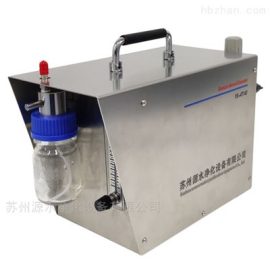
# Aerosol Generator: Principles and Applications in Modern Technology
## Introduction to Aerosol Generators
An aerosol generator is a device designed to produce a fine mist or spray of liquid or solid particles suspended in a gas, typically air. These devices are widely used in various industries, including pharmaceuticals, environmental science, and consumer products. Understanding the principles behind aerosol generators and their applications can provide valuable insights into their role in modern technology.
## How Aerosol Generators Work
Aerosol generators operate on several principles, depending on their intended use. The most common methods include:
– **Nebulization**: This process involves converting a liquid into fine droplets using ultrasonic vibrations or compressed air. Nebulizers are commonly used in medical applications to deliver medication directly to the lungs.
– **Atomization**: In this method, a liquid is forced through a small nozzle at high pressure, breaking it into tiny droplets. This technique is often used in spray painting and fuel injection systems.
– **Electrospray**: This advanced technique uses an electric field to create a fine mist of charged droplets. It is particularly useful in scientific research and nanotechnology.
## Applications of Aerosol Generators
Aerosol generators have a wide range of applications across different fields:
### Medical and Pharmaceutical Industry
In the medical field, aerosol generators are essential for delivering medications directly to the respiratory system. Nebulizers, for example, are used to treat conditions such as asthma and chronic obstructive pulmonary disease (COPD). They ensure that the medication reaches the lungs effectively, providing quick relief to patients.
### Environmental Science
Aerosol generators play a crucial role in environmental science by simulating atmospheric conditions. Researchers use these devices to study the behavior of aerosols in the atmosphere, which is vital for understanding climate change and air quality. They are also used in air purification systems to disperse disinfectants and deodorizers.
### Consumer Products
In the consumer market, aerosol generators are found in products like air fresheners, hairsprays, and deodorants. These devices provide a convenient way to disperse liquids in a controlled manner, ensuring even distribution and effective use.
### Industrial Applications
Industries such as automotive, electronics, and food processing rely on aerosol generators for various purposes. For instance, they are used in spray coating applications to apply protective layers on surfaces. In the food industry, aerosol generators help in flavoring and preserving products by evenly distributing additives.
## Advantages of Using Aerosol Generators
Aerosol generators offer several benefits, including:
– **Precision**: They allow for precise control over the size and distribution of particles, which is crucial in applications like drug delivery and scientific research.
– **Efficiency**: These devices can produce a large volume of aerosol in a short amount of time, making them highly efficient for industrial and commercial use.
– **Versatility**: Aerosol generators can handle a wide range of materials, from liquids to powders, making them suitable for diverse applications.
## Conclusion
Aerosol generators are indispensable tools in modern technology, with applications spanning from healthcare to environmental science and beyond. By understanding their principles and uses, we can better appreciate their impact on various industries and their potential for future innovations. Whether it’s delivering life-saving medications or improving air quality, aerosol generators continue to play a vital role in advancing technology and improving our quality of life.
Keyword: Aerosol Generator
